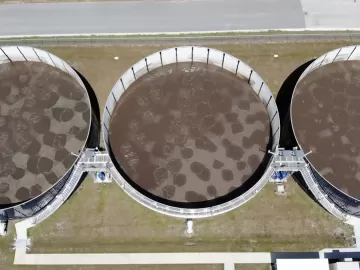When Mixing is the Goal, Why Would You Aerate? Compressed Gas Mixing Provides an Alternative Approach
At the beginning of the 20th century, biological wastewater treatment — more specifically, the activated sludge process — was developed and became widely accepted as the treatment method for municipal wastewater, helping to protect our lakes and rivers from pollutants and support public health. In 1947, the Committee on Development of Uniform Standards for Sewage Works was created by the group known as the Great Lakes – Upper Mississippi River Board of State and Provincial Public Health and Environment Managers.




